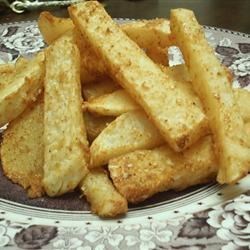Everyone knows (and for some reason dreads) the ubiquitous Holiday Fruitcake, but how many of us have ever tried to eat or make one? Why are they so hated and feared? Part of the reason is that many traditional holiday cakes are meant to be preserved and aged. A well preserved cake can be aged for decades, just waiting for an adventurous, some might say 'fool-hardy', relative to open it up and take a bite.
For the moment, we'll disregard Hollywood's take on this ancient tradition and take a look at one method of preserving homemade cakes. You will achieve immediate and tasty results while keeping the option of preserving the cake for a rainy day.
ANYTHING BUT FRUITCAKE:
Just to make this easy (and to avoid the standard, knee-jerk reaction to any suggestion of fruitcake), I'm going to use my gingerbread recipe; the method works with almost any floured cake, but I'm choosing one that doesn't use any milk or egg, just in case.
THE METHOD
Bake your gingerbread cake and let it cool completely in the pan, then turn the cake out onto a cutting board. Cut a piece of cheese cloth large enough to wrap easily around the entire cake and place it on top of a sheet of foil of the same dimension. Place the cake, right side up, in the center of the cheese cloth and foil. bend the edges of the foil up slightly to create a wide bowl around the cake.
Now that the cake is positioned properly, it's time to add some good old Holiday Cheer! Take 1 cup of your favorite liquor and slowly pour it directly onto the cake. Make sure to saturate the cake as evenly as possible. My favorite preservatives to use are Grand Marnier or Bourbon, but some other good ones are Rum and Brandy.
NOTE:
As you are deciding which liquor to use, consider the fact that the objective in preservation is to sterilize and discourage future growth of bacteria. With that in mind, you'll want to choose something with a reasonably high alcohol content.
Allow the cake to soak up as much liquor as it can (whatever the cake doesn't absorb will be soaked into the cheese cloth), and then gently wrap the cheese cloth around the cake, followed by the foil. Try to make the foil as air-tight as possible to prevent the cake from drying out. If you plan to store the cake long term, be sure to check it periodically to ensure that it is aging properly - look for any signs of spoilage, and if it seems dry, pour another cup of your chosen liquor over the top of it (no need to remove the cheese cloth) before re-wrapping the foil tightly.
From there, you can tie a bow around it and give to a friend, or store it for the coming months or even next year! I would recommend you store it in a cool dry place, such as the top shelf of you refrigerator.
Happy Holidays,
and
Enjoy Your Cake!







